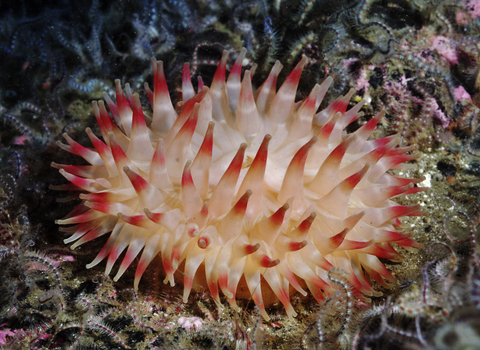
Dahlia Anemone ©Linda Pitkin/2020VISION
Dahlia anemone
With their beautiful striped tentacles, it's easy to see where dahlia anemones got their floral name from. Look out for them next time you're rockpooling!

Dahlia Anemone ©Linda Pitkin/2020VISION